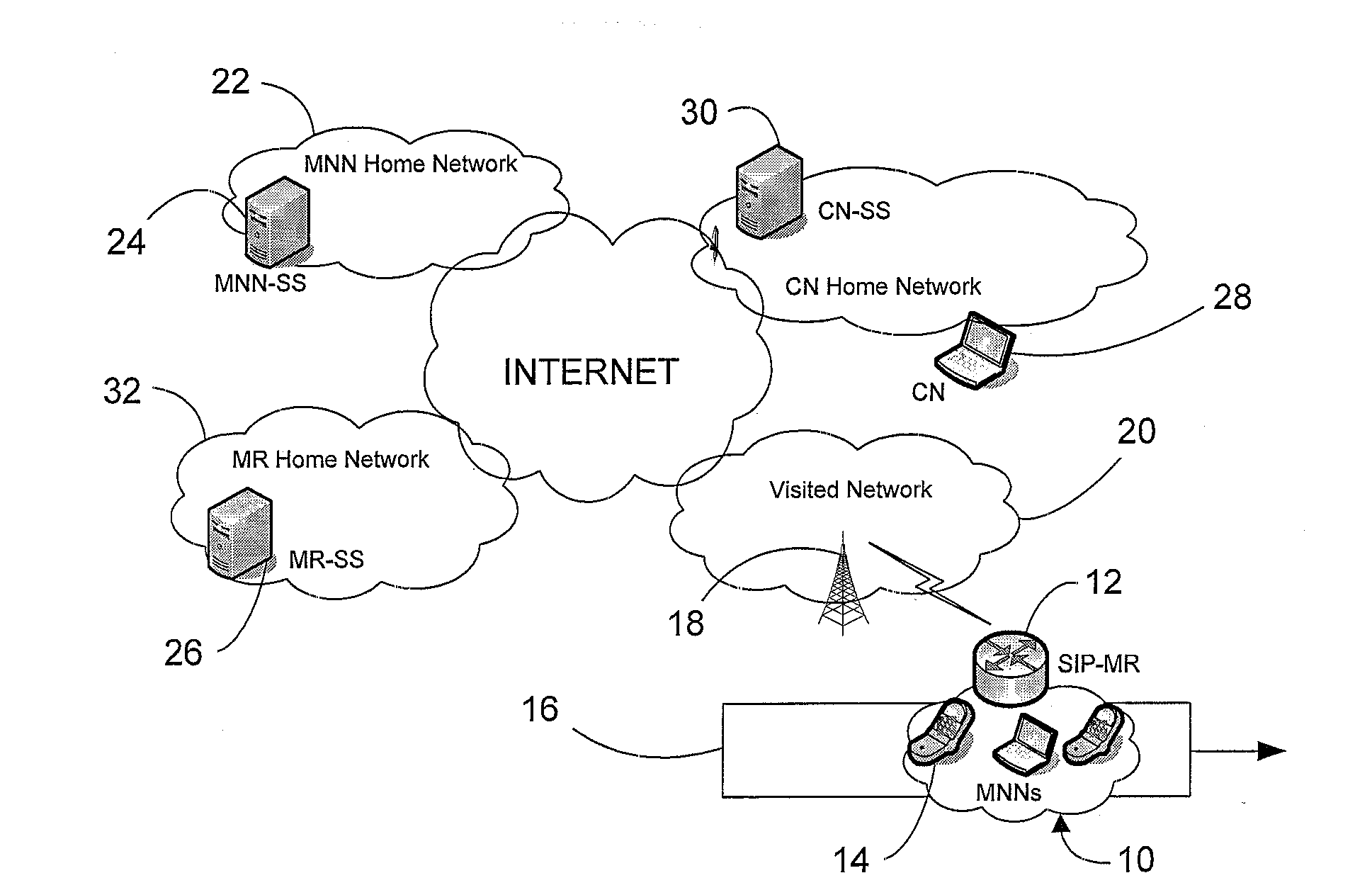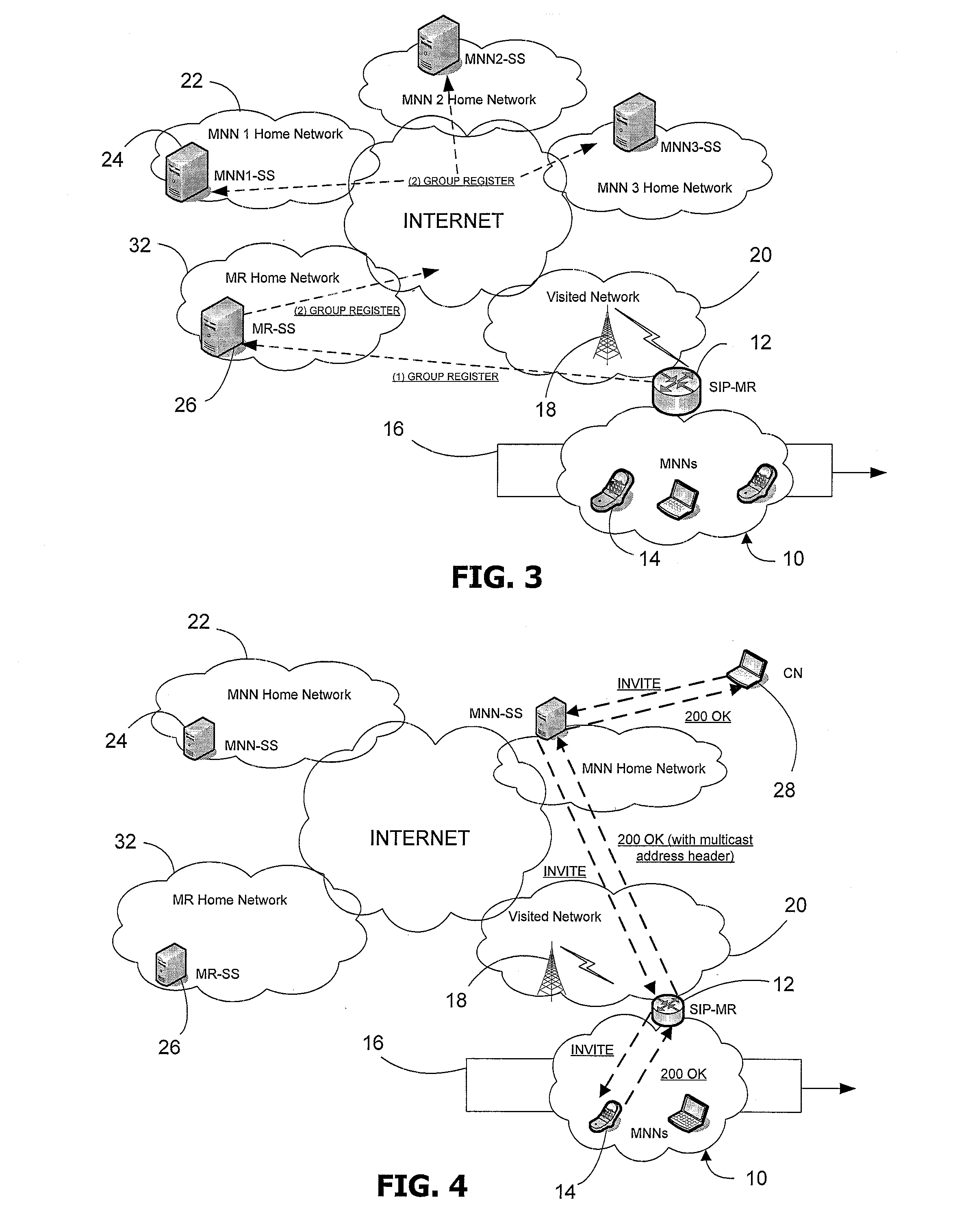Systems and Methods for Improving Network Mobility
a network mobility and network technology, applied in the field of systems and methods for improving network mobility, can solve the problems of poor routing path, affecting so as to mitigate the need for signalling data and improve the routing of datagrams on each channel
- Summary
- Abstract
- Description
- Claims
- Application Information
AI Technical Summary
Benefits of technology
Problems solved by technology
Method used
Image
Examples
Embodiment Construction
)
[0051]Referring to FIG. 1 a mobile network generally identified by reference numeral 10 comprises a SIP-enabled mobile router (SIP-MR) 12, serving a SIP-enabled Visiting Mobile Node (VMN) 14 (that may or may not have multi-mode capability) via an Access Point (AP; not shown). The SIP-MR 12 performs the functions of User Agent on behalf of the MNNs attached to the mobile network 10. In particular the SIP-MR 12 comprises a User Agent Client (UAC) which generates requests, and a User Agent Server (UAS) which responds to them. The AP may be a wireless access point or a wired access point. The mobile network 10 is part of a train 16 that moves relative to a number of physically fixed access routers (only one shown, 18) that are not part of the train 16: access router 18 operates under a wireless local area network (WLAN) communication protocol such as IEEE802.11; other access routers might utilise a DVB transmission protocol, a Universal Mobile Telecommunication System (UMTS) communicat...
PUM
 Login to View More
Login to View More Abstract
Description
Claims
Application Information
 Login to View More
Login to View More - R&D
- Intellectual Property
- Life Sciences
- Materials
- Tech Scout
- Unparalleled Data Quality
- Higher Quality Content
- 60% Fewer Hallucinations
Browse by: Latest US Patents, China's latest patents, Technical Efficacy Thesaurus, Application Domain, Technology Topic, Popular Technical Reports.
© 2025 PatSnap. All rights reserved.Legal|Privacy policy|Modern Slavery Act Transparency Statement|Sitemap|About US| Contact US: help@patsnap.com



